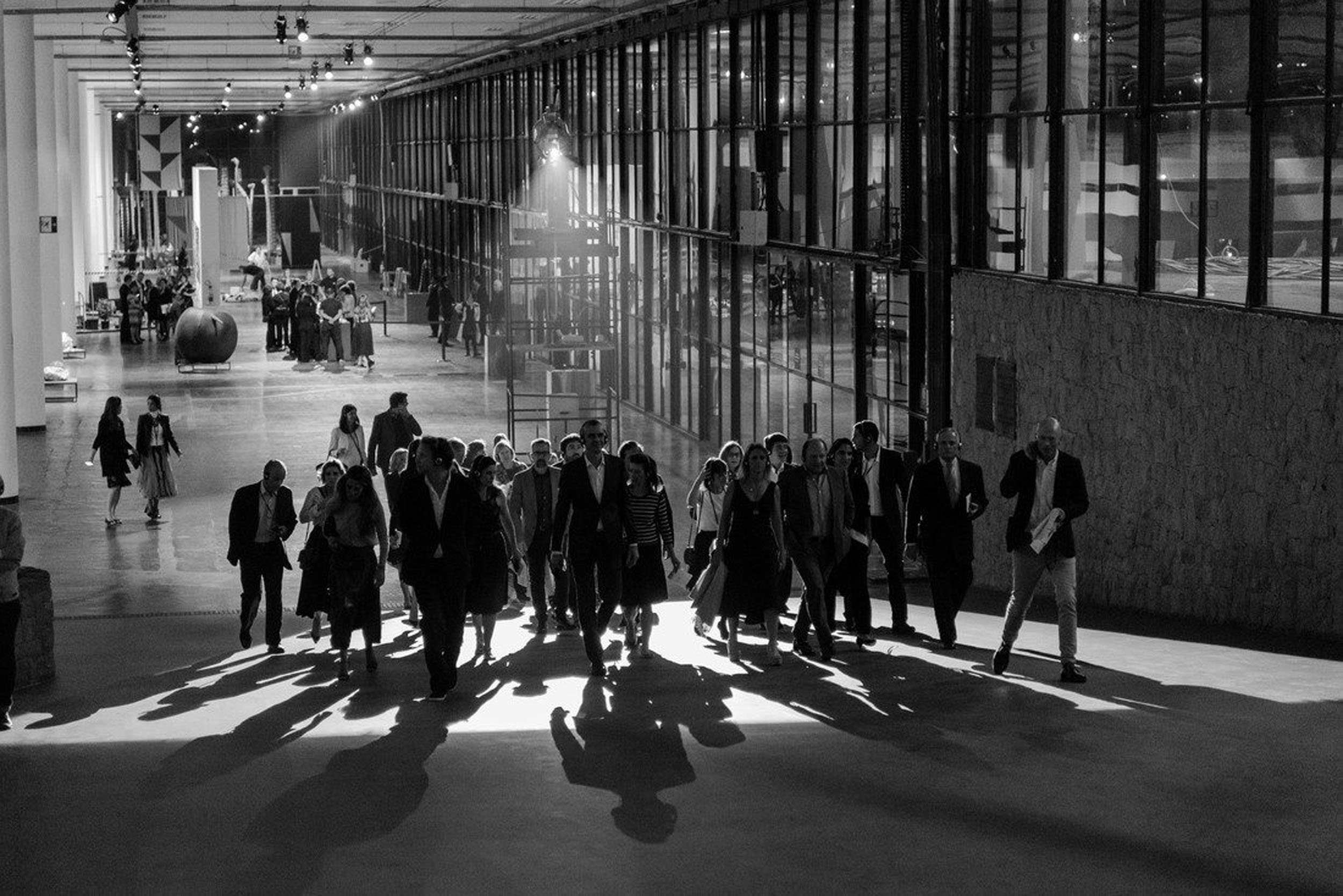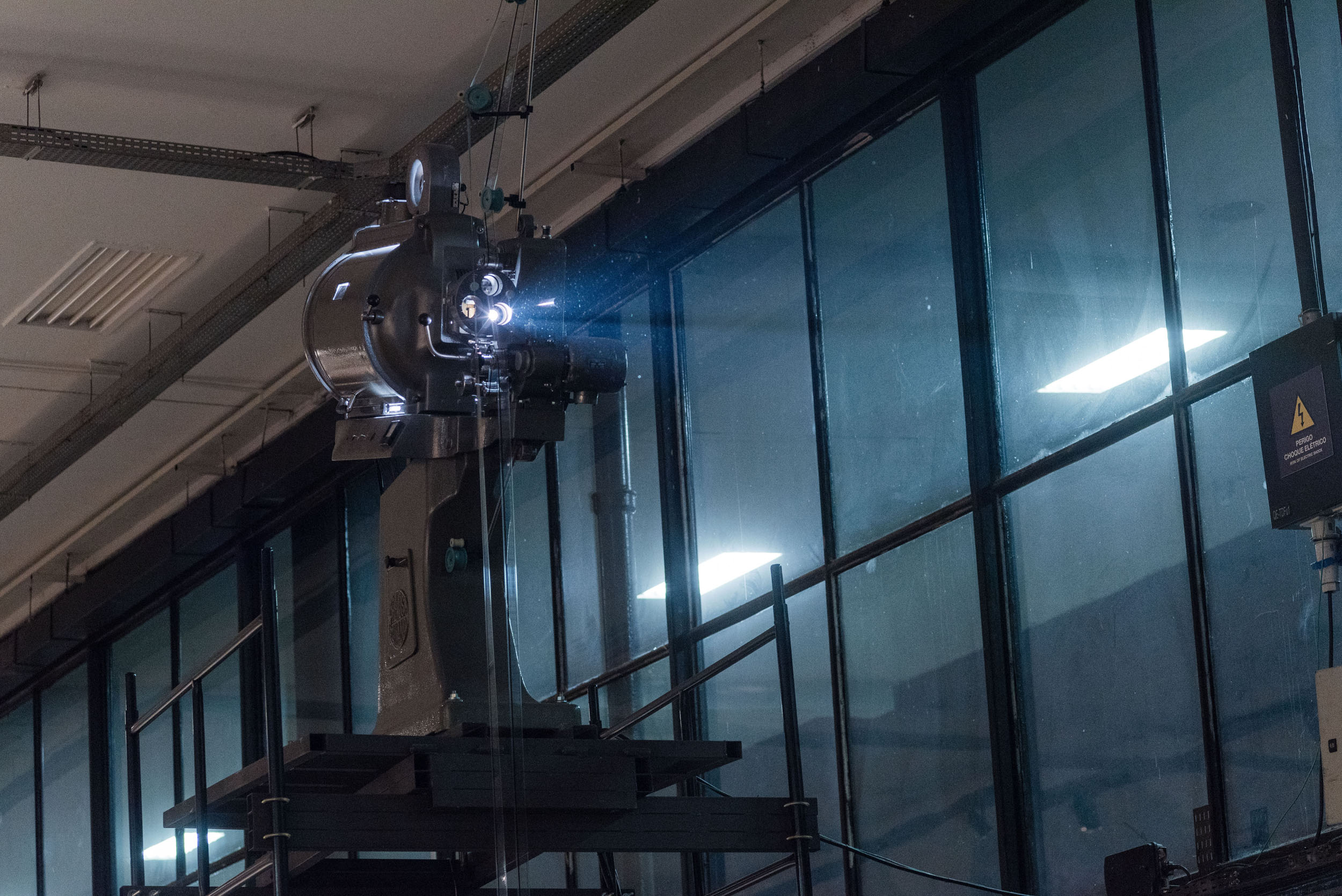“White Museum, as evidenced in all its versions, is framed by an astronomical understanding of light as distance traveled. The projector beam visible in the night air delineates a fixed distance from the lens to a sharp-edged screen formed from the light hitting a surface. The series exposes the cinematic desire for narrative that can be represented through images in a one-to-one relation to our lived experience of time. While in cinema this is usually achieved through montage, Barba here borrows from gallery installations of film, placing its endless loop outside in locations deliberately illuminated as transitional spaces. In industrial filmmaking, such locations might be used to set a scene, create an atmosphere, or transport us to a particular place and time; these framing spaces often correspond either to what we understand as a fixed camera position—looking onto, say, a painted scene or theatrical set—or to a tracking shot. White Museum, in presenting a “straight take,” or single fixed shot across which things pass (people, animals, plants, dust . . . ), does not record the image on film but simply lights the event. In creating an unrepeatable film, Barba essentially disavows the mechanical reproduction that is the basis of our predominant understanding of film history and turns technique on its head. Although there are no cuts, split screens, or fades to black, there is a constant dissolve. White Museum is a film made only of transitions. ” (excerpt from Victoria Brooks, "In the Imaginary Spaces", in: Rosa Barba: The Color Out of Space, New York, 2016)
White Museum (São Paulo), 2010/2016
70mm film, projector
Images: Installation view at São Paulo Biennial, 2016 © Rosa Barba


